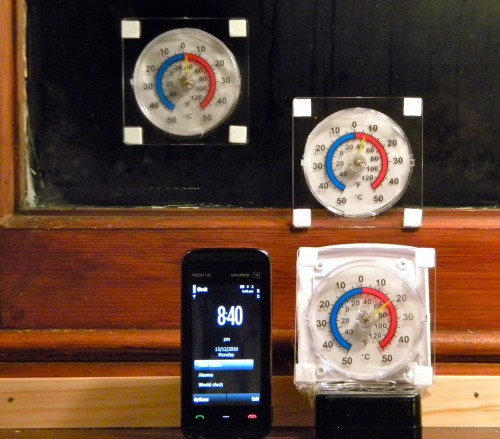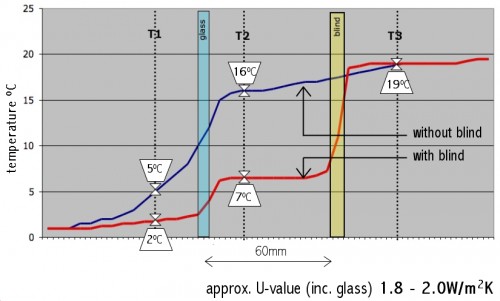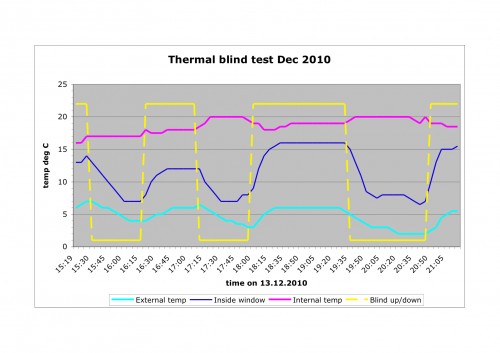The five layers of the thermal blinds are;
1. Room side fabric – (usually) 100% polyester with blackout surface (8 std colour choices + more)
2. 12mic Aluminised Mylar (space blanket)
3. 7mm Thinsulate (‘Clo’ value of circa 1.1)
4. 12mic Aluminised Mylar
5. 110g poly cotton blackout lining fabric
The inner layers incorporate a 7mm Thinsulate core (a highly insulating thermal fleece, normally used for clothing), with two layers of aluminium faced Mylar (‘space blanket’ material as developed by NASA) either side of the core.
Thermal technical tests
In December 2010 a six hour test of the blinds performance was undertaken using the prototype fitted to a typical single-glazed Victorian window. The results showed that the blinds prevent a significant heat loss through the window glass and reduced downdrafts close to the window. The blind reduced the U-value of the window from 4.8W/sq.m/K (typical single glazed window value) to around 1.8 – 2.0 W/sq.m/K. This is equivalent to triple glazing.
When a ‘steady-state’ temperature was reached (at 2.5°C outside the window and 20°C inside the room) the temperature difference between each side of the blind was 12.5°C. Download the report here.
Retrofit for the Future projects
The blinds have been included in five of the innovative Technology Strategy Board (TSB) funded ‘Retrofit for the Future‘ projects. They have been installed in five different properties in SE England which have been highly insulated and use a variety of heating methods in order to assess the effectiveness of low-carbon retrofit ideas. A map showing the five properties can be found here. As part of the TSB project the blinds in use are to be monitored by the Energy Saving Trust using Wattbox monitoring processes.
Further tests & collaborations
Collaborations include planned analysis & technical assessments with Dr Steve Lo of the University of Bath & discussions with Dr Paul Baker of Glasgow Caledonian University, who wrote a report for Historic Scotland on window treatments to improve thermal performance (download here). From these tests a guide U-Value of the blinds has been ascertained.

Testing rig – T1, T2 & T3 at steady state after blind down (raised for pic)

